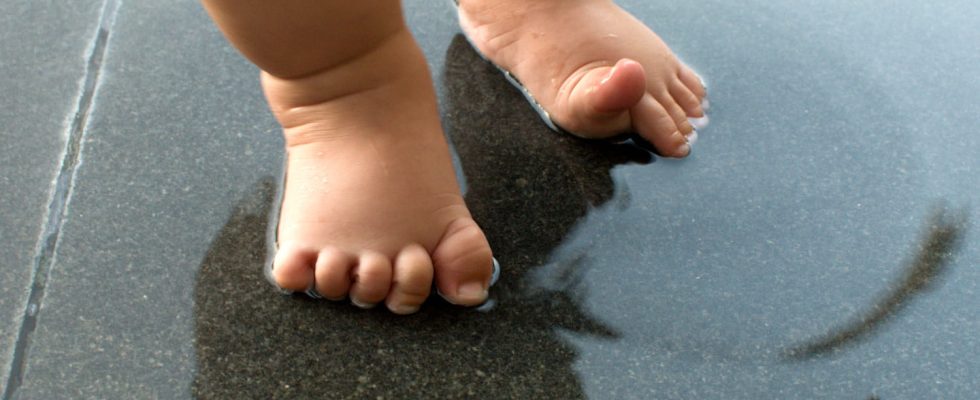Few children do not have plantar warts. What causes warts on the feet? How to recognize them? Info and treatments.
Swimming pool, judo, football… Your child happily follows sports activities. But for a few days, a small growth appeared on the sole of his foot… You have to face the facts, he does have a plantar wart as 20 to 30% of French children aged 5 to 15. What are the causes ? When to consult? How recognize them?
What are the causes of plantar warts in children?
Very common, these warts are caused by the human papilloma virus (HPV) but are nonetheless benign. Round and rough, plantar warts appear on more often during periods of growth or stress when the immune system defends the body less well.
When to consult in case of plantar wart in children?
If there is no urgency to treat it (if it does not multiply or it is not painful for example), you can still make an appointment with your doctor to confirm the diagnosis. He will then advise you to go with your child to a dermatologist or to wait for the wart to disappear on its own. The body generally manages to get rid of the virus without medical help. In the child, “about a third of warts heal spontaneously in six months, specifies the French Society of Dermatology (SFD) on its website, adding that “there spontaneous regression within 2 years is observed in two-thirds of cases. Warts have no consequences other than aesthetic damage.
How to recognize a plantar wart in children?
There are two types of plantar warts. The first, the myrmecia, is a usually single lesion that is punctuated with small black dots. It can be painful in support. There are also the mosaic warts which are actually patches of thickened skin covered with painless lesions.
Are plantar warts in children contagious?
Warts are contagious. It’s done the skin lesion itself which is the main source of contagion. It is therefore essential not to scratch the warts to prevent the virus from spreading. In effect, “Transmission between individuals is most often by contact direct skin, favored by epidermal break-ins or dry skin”. If cutaneous warts can therefore be contagious, you should not not isolate a child’s laundry who has one. The French Dermatology Society recalls that “the papillomavirus is a virus present on the surface of the skin of more than 50% of individuals”. This does not mean that all these people have one or more warts…
If your child goes to the swimming pool, think of him wear flip flops and to him dry his feet after he has finished bathing. The papillomavirus is indeed particularly fond of hot and humid environments such as swimming pools, sports halls, etc.
First, you can buy a virucide in a pharmacy containingsalicylic acid which is suitable for children. Less concentrated than that used by dermatologists, it will be a little less effective but painless. There are also non-painful natural alternatives that can be tried in children, such as the application of celandine juice or “wart weed“.
If no effect is visible or the wart is painful, make an appointment with a dermatologist. It can use different methods with similar efficiencies. The most common, however, is the cryotherapy which consists of the local application of liquid nitrogen. Easy to use and inexpensive, it burns the wart and can be effective from the first session. THE keratolytics, salicylic acid preparations, can also be used. They are then applied as an occlusive dressing for one to two weeks. Regardless of the method, it is recommended to return to the dermatologist three to four weeks after the first appointment to ensure proper healing of lesions. If this is incomplete, he can then propose one or more additional sessions until the complete disappearance of the lesions. Know that these treatments are symptomatic, that is to say that they do not eliminate the virus but only the lesions.
